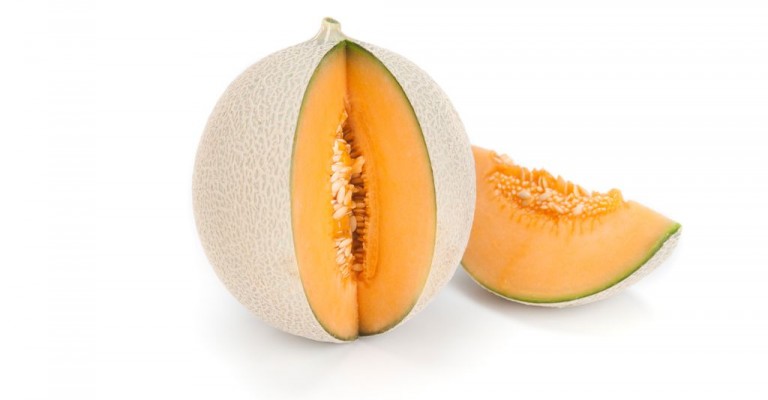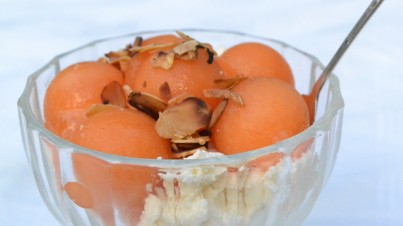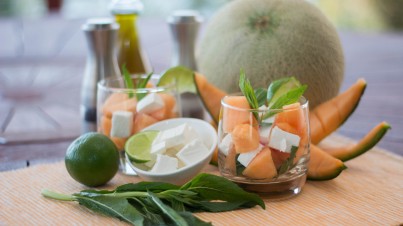Cantaloupe melons, often called rock melons or western shippers, have orange flesh, are normally fully netted and can differ during the year or location. Some varieties have a slightly golden skin colour and often have an aromatic fragrance. Many of the newer varieties tend to be firmer and sweeter but with little or no aroma.

Belonging to the Cucurbit family, canteloupes are produced on a fruiting vine and produce sweet and juicy orange flesh. Typical sizes range from 1 to 1.8 kg, the fruit are highly desirable in many countries all over the world.
How to prepare
Cut the melon in half, scoop out and discard the seed cavity, then cut the melon into slices or wedges. Remove the flesh just above the rind and serve as wedges, or slice and cube.
You can also use a special melon baller to scoop out the flesh.
Buyer's and storage guide
A ripe cantaloupe melon should have a bit of give when gently pressed. Remember for most melons there will be a discoloured patch on one side of the fruit, this is acceptable as it is where the fruit has rested on the ground.
Melons can be stored in a cool dry place outside or in the refrigerator. For the best flavour keep the melon out on the bench and use within a few days. Any unused cut portions should be wrapped in cling film or stored in air tight containers, which can then be kept in the refrigerator for up to one week. It is not advisable to freeze.
Serving
- Serve directly as a freshly cut wedge or add chunks to a fruit salad
- As an appetiser wrapped in prosciutto on a toothpick
- In a salad with mint and feta
- Blended with other ingredients as a smoothie or milkshake, or used in a sorbet
- Blend with oranges and some sugar and serve as a cold soup for dessert, garnish with some mint leaves



